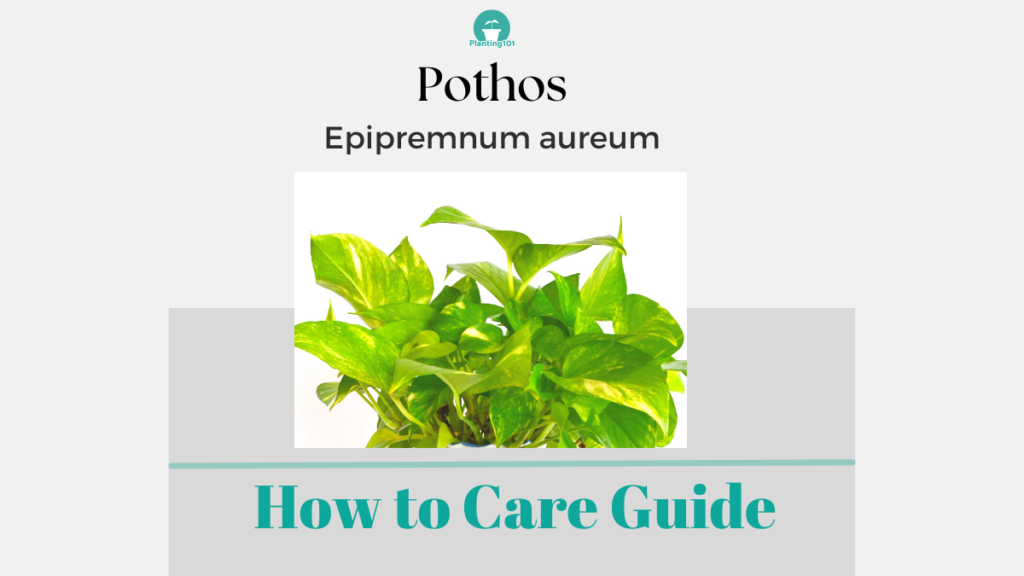Pothos (Epipremnum aureum) is one of the best houseplants for beginners. It is a low-maintenance houseplant that is tolerant of neglect. Plus, it is an attractive houseplant with glossy, heart-shaped leaves that looks beautiful perched on a bookshelf or in a hanging basket. Pothos is also known as effective air purifying indoor plant, removing toxins in the air. No wonder, it’s such a popular houseplant! Do be aware that Pothos are toxic to humans and pets, so keep it away from children and pets. Here is a beginner’s guide on how to care for your Pothos indoors.
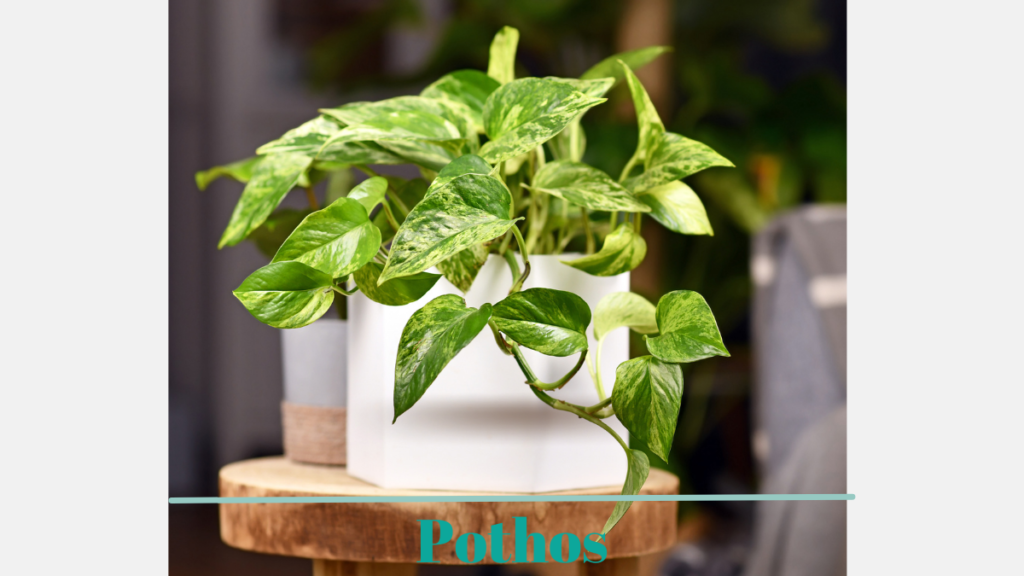
Pothos Houseplant Care at a Glance
| Name | Pothos |
| Scientific Name | Epipremnum aureum |
| Care Level | Easy |
| Light | Bright, Filtered Light or Artificial Light. Can Tolerate Medium Light. |
| Daytime Temperature | 70 to 80 F (21-26C) |
| Night Time Temperature | 60 to 70 F (15-21C) |
| Water | Moderate Water |
| Humidity | High Humidity |
| Potting | Well-draining, organic, all-purpose potting mix |
| Fertilizer | Once every 2 weeks during the growing season. Once a month in the winter. |
| Air Purifying Plant | Removes trichloroethylene (TCE), Formaldehyde, and Benzene. |
| Toxic to Pets and Humans | Toxic |
Pothos: Common Names
Pothos is also called Jade Pothos, Devil’s Ivy, Ivy Arum, and Taro Vine.
Pothos: Varieties
Popular Pothos varieties are Epipremnum aureum var ‘Jade’, Epipremnum aureum var ‘Golden Pothos’ and Epipremnum aureum var ‘Marble Queen’.
Pothos: Size
Pothos are small hanging houseplants with long trailing stems. Your Pothos’s stems can grow to more than 20 feet long if you let it! You can easily cut the stems to control the growth.
Pothos: Toxic to Dogs?
According to the ASPCA, Pothos are toxic to dogs. Don’t let your dog chew on the leaves of the Pothos plant because it contains calcium oxalate crystals. The crystals can cause vomiting and difficulty breathing. It can also result in swelling of lips, tongue, and mouth and excessive drooling.
Pothos: Toxic to Cats?
Pothos are toxic to cats (source ASPCA). Don’t let you cat near your Pothos plant because its leaves contain calcium oxalate crystals. The crystals can cause vomiting and difficulty breathing. It can also result in swelling of lips, tongue and mouth and excessive drooling.
Pothos: Toxic to Humans?
Pothos are toxic to humans. Keep your pothos away from small children. Hang it up in a basket or position it on a high bookshelf. Don’t let children chew on the leaves of the Pothos plant because it contains calcium oxalate crystals. The crystals can cause vomiting and difficulty breathing. It can also result in swelling of lips, tongue and mouth and excessive drooling. If you see any of these symptoms and suspect ingestion of Pothos plants, call poison control immediately! Also, call your doctor once you start seeing adverse reactions in children.
Light
Pothos: Sun or Shade?
Pothos grows best in a bright filtered light location. It is tolerant of a wide range of light conditions. It grows well under artificial light, which makes Pothos suitable as an indoor plant. Avoid direct sun exposure since sunlight can burn the leaves.
Water
How Often Should You Water Your Pothos?
Your Pothos has moderate water requirements. Water your Pothos when the soil feels dry. The best way to tell when it is time to water your Pothos is to feel the soil. Stick your finger in the soil 1 inch deep. If it feels dry, it’s time to water your Pothos.
How Do You Know When to Water Your Pothos?
Water your Pothos when the soil feels dry. The best way to tell when it’s time to water is by sticking your finger into the soil. Stick your finger in the soil 1 inch deep. If the soil feels dry, then it’s time to water your Pothos.
What Type of Water Should You Use When Watering Your Pothos?
Your Pothos can be watered with tap water but be mindful of the water temperature that you are using to water your Pothos. Don’t use straight cold water from the tap to water your Pothos. Pothos prefers cool water that is not hot and not cold. When you turn on the cold water from the faucet add a little bit of warm water.
You can also get to this ideal temperature by filling a watering can or pitcher with water and leaving it out overnight until the water is at room temperature.
How Do You Make Sure There is Proper Drainage for Your Pothos?
Good drainage is important, you don’t want your Pothos to sit in soggy soil. Make sure there are drainage holes at the bottom of the pot. After watering your Pothos and you see water draining out of the pot’s drainage holes, make sure you empty out the accumulated water in the saucer. Don’t let your Pothos’s pot sit in this puddle of water. It will cause root rot!
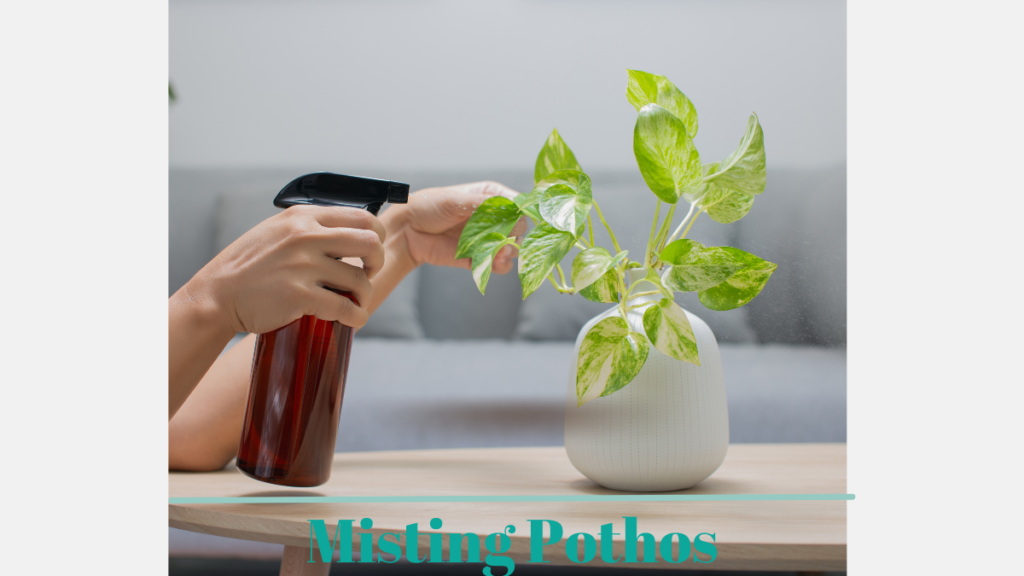
Do You Need to Mist Your Pothos?
Your Pothos is a houseplant that likes humid conditions. You should increase indoor humidity. Mist your Pothos a few times a week.
Soil
What Type of Potting Mix is Best for Your Pothos?
Your Pothos needs a well-draining, organic all-purpose potting mix.
How Do You Know When To Repot Your Pothos?
Repot your Pothos once a year. Best to repot in the Spring. Repot your Pothos in a container with a diameter 2 inches larger than the current pot.
Fertilizer
Do You Need to Fertilize Your Pothos?
Your Pothos should be fertilized once every 2 weeks during the growing season. Once a month in the winter.
What Fertilizer Should You Use on Your Pothos?
Use liquid or powder, organic fertilizer with a higher ratio of nitrogen on your Pothos.
Propagation
How Do You Propagate Your Pothos?
Your Pothos is easy to propagate. You can propagate your Pothos by stem tip cutting. Below are steps on how to propagate Pothos Plant by stem tip cutting:
1. Take a Stem Tip Cutting of Your Pothos (include a node)
Pick a stem with a node. Cut below the node.
2. Place Your Pothos Stem in a Jar of Water
Place the Pothos stem into a jar of water and wait for it to grow roots. To help it focus its energy on growing roots, make sure your stem has a maximum of 2 leaves. Cut off extra leaves as needed.
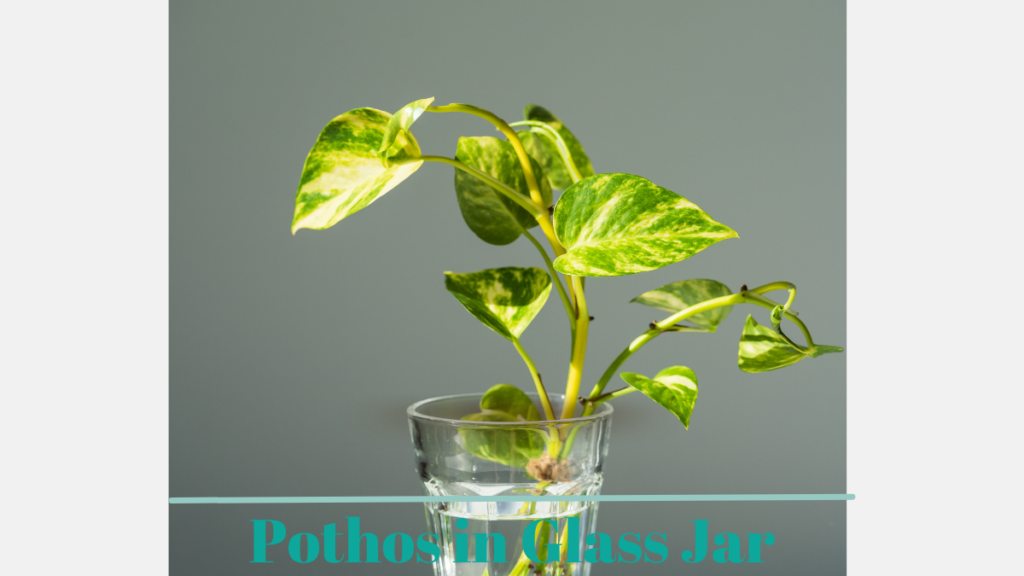
Another way to stimulate root growth is to dip your stem cutting in root hormone and plant it in moist sand. I personally prefer the jar method so you can easily see the roots come out. Know that not all stem cuttings of Pothos will grow roots, so to be safe, cut a few stem cuttings so you will at least get one with roots.
3. Plant Pothos Stem Cutting in a New Pot
Once the roots grow, plant these stem cuttings into a new pot. Water the new plant immediately after planting. Then water every 2-3 days until the roots are established.
4. Place New Pothos in a Spot with Bright Indirect Sun
Place your new Pothos plant in a spot with bright indirect sunlight. Don’t put it in direct sunlight.
Common Problems of Pothos Plant Care
The most common problems that affect Pothos are mealybugs, leaves changing color, and root rot.
Pothos Problem: Fluffy White Growth In Between the Leaves and Stems of Your Pothos
Problem: There are fluffy white growths in between the leaves and stems of your Pothos.
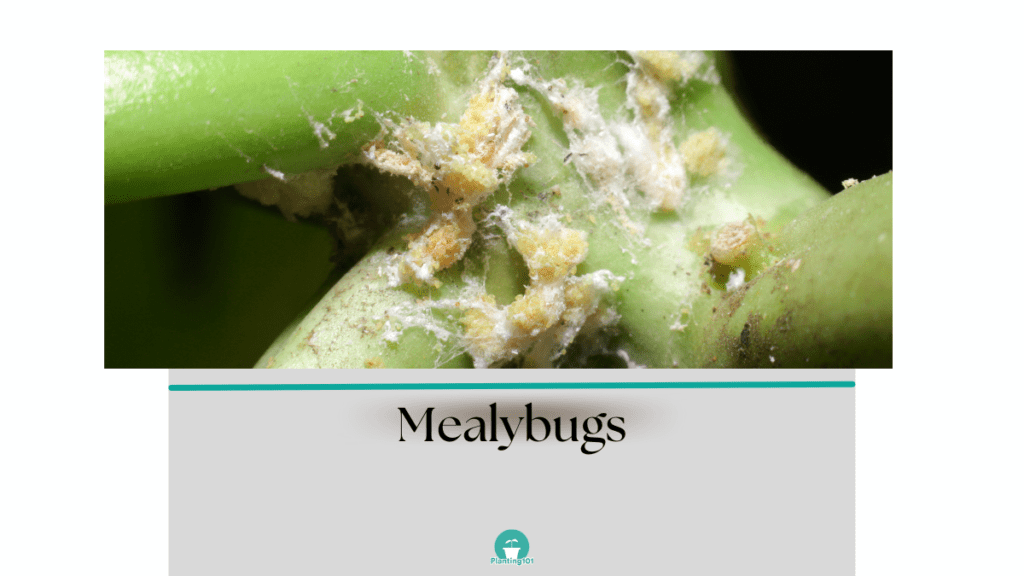
Cause: Mealybugs are causing the fluffy white growth on your Pothos. It is a common houseplant disease.
Solution: To get rid of mealybugs on your Pothos, wash your plant with water. You can also use soapy water. Spraying rubbing alcohol on affected areas can also get rid of mealybugs. Horticultural oil and insecticidal soap are also effective in getting rid of mealybugs.
Check out our article on how to make your own homemade pesticides using baby shampoo: How to Make Horticultural Oil and How to Make Insecticidal Soap
Pothos Problem: Your Pothos Looks Wilted (Soil is Wet)
Problem: Your Pothos looks wilted even if the soil is wet. Check for root rot by pulling the plant out and examining the roots. If the roots of your Pothos plant look mushy (healthy roots are firm) and the roots are gray to black in color, these are telltale signs of root rot.
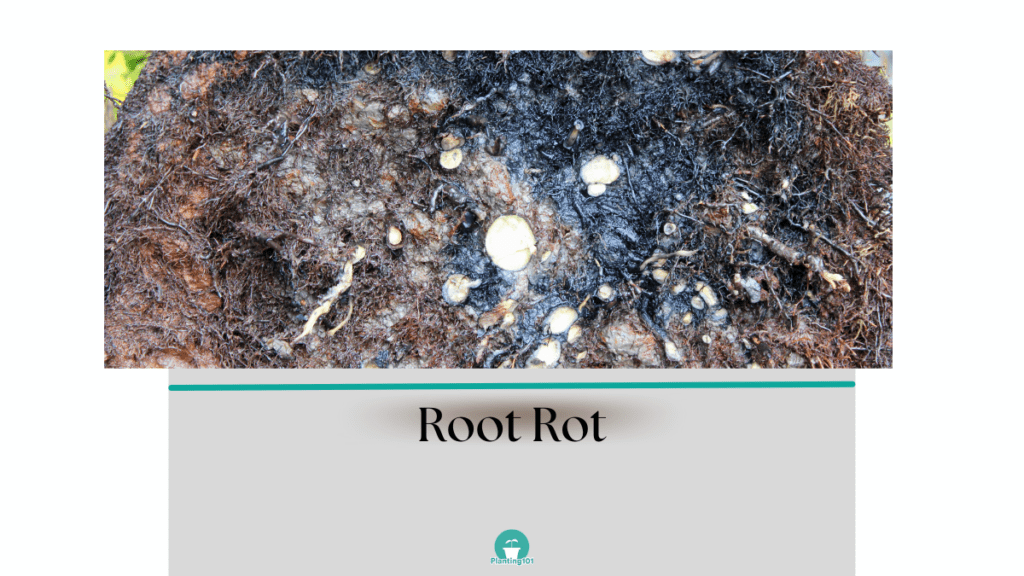
Cause: Root rot is caused by fungus and is a serious problem for your Pothos. Root rot is a result of wet soil due to overwatering or poor drainage.
Solution: When your Pothos is afflicted with root rot the chance of survival is slim. Your best course of action is to throw your Pothos out and start over with a new plant. This time don’t overwater your Pothos and make sure there is good drainage in the pot.
Pothos Problem: Your Pothos’s leaves are turning pale and losing its colors
Problem: Your Pothos’s leaves are turning pale and losing its colors. This is evident with variegated leaves where its turning plain green and losing its colors.
Cause: The leaves changing color is a result of too much or too little sun exposure.
Solution: If you think the cause is too much sun exposure, move your Pothos to a less sunnier spot. If the leaves changing color is a result of too little sun, you can adjust sun intensity by removing curtains or moving your Pothos.
Pothos: Air Purifying Plant
Pothos is an air purifying plant. It will clean the air by removing air pollutants such as trichloroethylene (TCE), Formaldehyde, and Benzene. In a NASA research study, Pothos is effective in removing trichloroethylene (TCE), benzene, and formaldehyde. In fact, the NASA study showed that Pothos effectively removed 73.2% of benzene in the air and 9.2% of trichloroethylene in the air.
Cleaning Pothos Houseplant
What’s the best way to clean the leaves of your Pothos?
Dust accumulates on your Pothos leaves over time. The layer of dust decreases the plant’s ability to photosynthesize. Periodically wiping down the leaves of your Pothos with a damp cloth will help keep your plant healthy. You can also use a duster or dry duster cloth to wipe off the layer of dust on leaves.
You May Also Be interested in these Hanging Houseplants
How to Care for your Pothos (Epipremnum aureum)
How to Care for your Satin Pothos
How to Care for your Heartleaf Philodendron
How to Care for Your String of Pearls Plant
How to Take Care of Your Boston Fern (Nephrolepsis exaltata)

